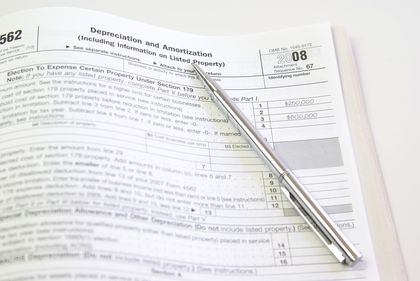CAPITALIZED COSTS

Capitalized costs are those expenses that are incurred in building or financing a fixed asset. Examples of capitalized costs include labor expenses incurred in building a fixed asset or interest expenses incurred as a result of financing the construction of a fixed asset. For accounting purposes, those expenses are capitalized, or added to the cost of the asset. They are not deducted from revenue in the period in which they were incurred. Instead, capitalized costs are deducted from revenues over time through depreciation, depletion, or amortization.
The way an expense is categorized for accounting purposes affects a company's reported net income. Current net income is obtained by deducting current expenses from current revenues and taking other factors into account. Since capitalized costs are added to the cost of a fixed asset, they contribute to the basis value of the asset upon which depreciation, depletion, and amortization are calculated. Rather than being treated as a current expense and deducted from current revenues, capitalized costs affect net income over several reporting periods through depreciation, depletion, and amortization expenses associated with the fixed asset.
Fixed assets that qualify for such accounting treatment include facilities and other assets that a company constructs for its own use. Also covered are assets that a company constructs as a separate project and intends to sell or lease, such as a real estate development, a large office building, or a ship. Capitalized costs include certain financing and construction expenses associated with building such assets.
By capitalizing such expenses, or adding them to the cost basis of the asset, a truer accounting picture emerges of the acquisition cost that more accurately reflects the company's investment in the asset. Since the asset will be generating revenue over future periods of time, it is more accurate to deduct the capitalized costs associated with the asset from revenues over those future accounting periods. Adding capitalized costs to the cost basis of a fixed asset follows the standard accounting practice of matching expenses with revenues in the periods in which revenues are earned.
[ David P. Bianco ]
FURTHER READING:
Anderson, Hershal, and others. Financial Accounting and Reporting. 4th ed. Medford, NJ: Malibu Publishing, 1995.
Anthony, Robert N., and others. Accounting: Text and Cases. 9th e4. NP: McGraw-Hill Higher Education, 1994.
Diamond, Michael A. Financial Accounting. 4th ed. Cincinnati: South-Western Publishing, 1995.
Eskew, Robert K., and Daniel L. Jensen. Financial Accounting. 5th ed. New York: McGraw-Hill, 1995.
Solomon, Lanny M., Larry M. Walther, and Richard J. Vargo. Financial Accounting. 3rd ed. New York: West Publishing, 1992.
Comment about this article, ask questions, or add new information about this topic: